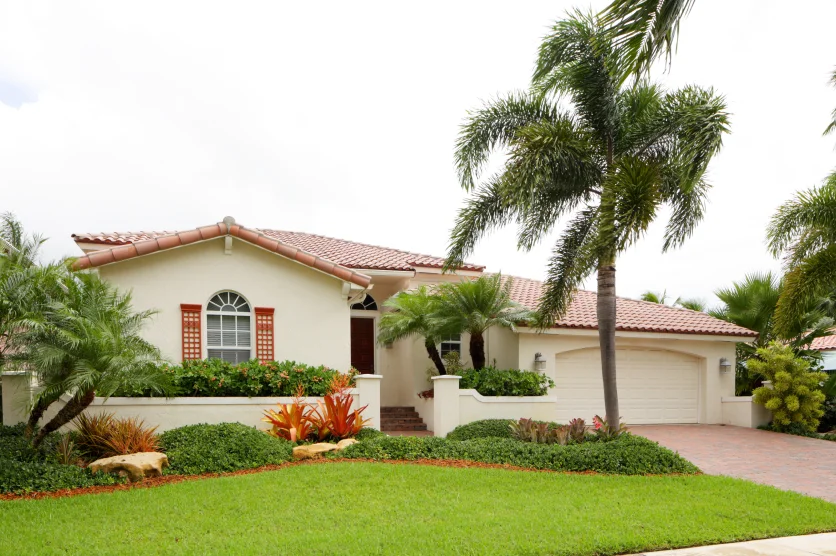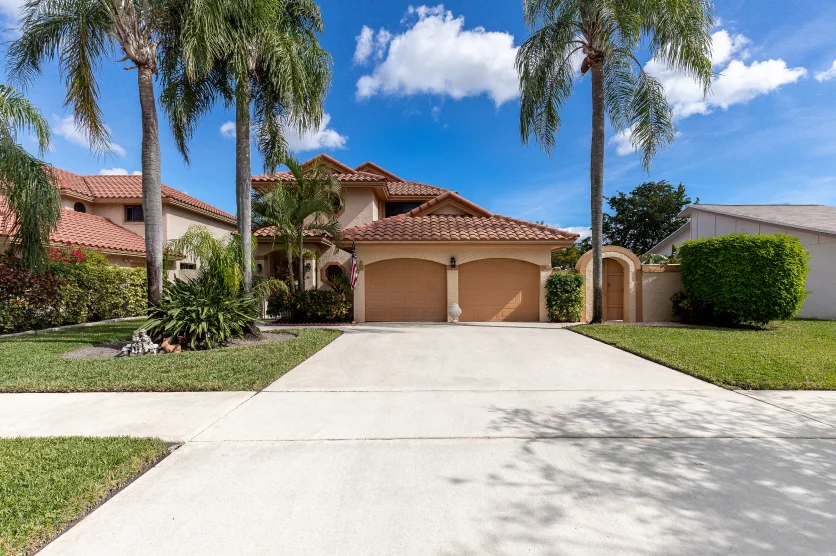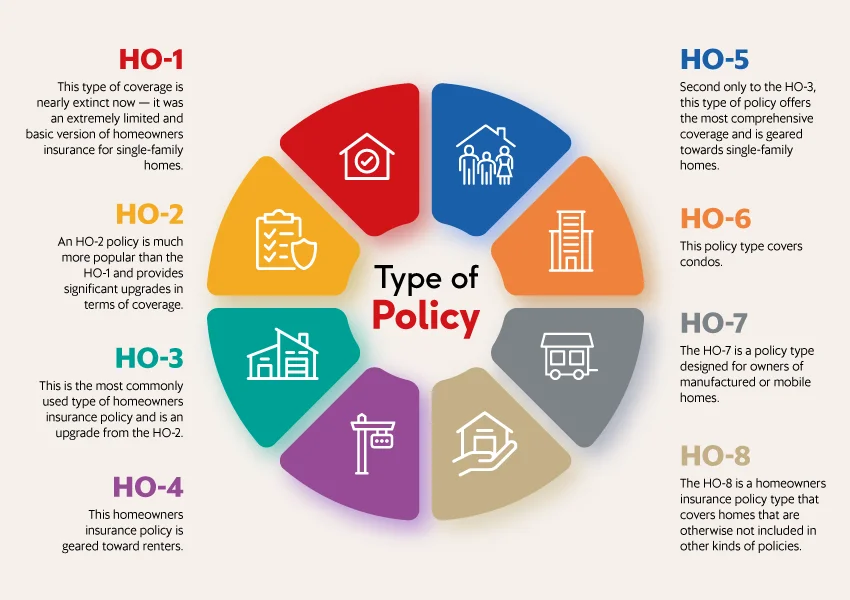
Florida Homeowners Insurance Quotes
Everything You Need to Know About Home Insurance in Florida
It seems like people have been migrating to Florida for its warm, sunny weather and beachy lifestyle for many decades. Retirees, especially, have found Florida to be a welcome relief from the cold winters of their working years. Lately, though, the new residents have been a mix of young and older, with the population of the Sunshine State growing by 319,000 new residents in 2022 – the biggest increase ever.
Despite its propensity for hurricanes and associated events, such as flooding and heavy wind, Florida still has a healthy economy and a job market that continues to grow. Sarasota, Orlando, Ocala, Jacksonville and the Tampa Bay area are in the top 10 list of most-moved-to cities in the nation, according to a study by PODS.
Many tourists visit the Florida Keys, particularly Key West, and are so drawn to the relaxed, laid-back lifestyle they may choose to relocate. However, Key West is one of the most expensive places to live in Florida, so you might choose to live in a less-pricey area and just visit what the locals call “paradise”.
Other Florida draws include several large theme parks, including the new (and largest) MIAMILAND. But Floridians also enjoy top-rated sports arenas as their state is home to several professional teams – plus the infamous Daytona International Speedway. There are 28 community and state colleges and the state is number 2 in the nation for improving high school graduation rates.
Even though the weather in Florida is one of the big draws, current and new homeowners must be prepared for severe weather since the state is surrounded by water on both sides. No matter where you choose to put down roots, let InsureOne help you find the best home insurance to meet all of Florida’s challenges.
How Much Does Homeowners Insurance Cost in Florida?
Florida has some of the highest rates for home insurance in the nation, roughly $6,000 annually. Compared to the annual U.S. home insurance policy coming in at $1,700 per year, residents in the sunshine state are paying the highest rates in the country. Florida is also currently experiencing an exodus of insurance companies, so residents may find it hard to get home coverage – similar to what some people in California’s wildfire areas are facing.
Residents and insurers alike have been hit hard in the state: In the 2000s, 79 tropical or subtropical cyclones affected Florida, with more than $236 billion in damages. Hurricane Ian struck in 2022, causing 150 fatalities and losses estimated around $113 billion. Hurricane Michael hit in 2018 and is responsible for $6.23 billion in insurance claims in the U.S.
Legislation in the state meant to help homeowners and carriers has resulted in higher bills and less recourse across the board. As with other states, inflation and labor shortages have increased the list of challenges.
How to Find Home Insurance in Florida
If you’ve decided to move to the sunshine state or already live there, you may find it hard to purchase an insurance policy for your home. Costs have skyrocketed and some carriers have even pulled out. There are several things you can do to help find the protection you want.
Shop and Compare Home Insurance Companies
Your best bet is to determine exactly what coverage you want and need from your home insurance policy and then find carriers who offer those items and compare their prices. Or you can contact the experts at InsureOne who will be happy to do the shopping and comparing for you across the best-rated insurers.
Bundle Home and Auto Policies
You can save anywhere from 25-30% by bundling your auto insurance and your home coverage with the same company. You’ll not only get the best of both worlds, but you’ll also save money doing it!
Make Your Home Safer
In Florida, if you live in an area prone to hurricane damage, you can take some steps to lower your home insurance costs. These include installing hurricane windows, replacing your roof with an impact-resistant material, such as metal, or using straps to tie your roof down. Take steps to safeguard your home from falling trees by doing pro-active landscaping, such as removing foliage that could damage your home in high winds.
At InsureOne, we can help you find the best insurance plan for your specific needs. We offer flexibility and customization in our one-stop shop.
How Do Home Insurance Deductibles Affect Rates in Florida?
Your deductible amount plays a large part in how much you pay for your premium. If you want to lower your premium, you can raise your deductible. That’s because your deductible is how much you pay out of pocket when you file a claim. The higher your deductible, the less your insurer has to kick in to pay off your claim.
Insurance companies typically reward those who are willing to take on a larger portion of the claim amount.
Compare Home Insurance Rates by Coverage Levels in Florida
Most people insure their homes for at least 80% of how much it would cost to replace it in the event of a total loss.
| Dwelling Coverage (Florida) | Average Annual Insurance Cost |
|---|---|
| $100,000 | $900 |
| $200,000 | $1,500 |
| $300,000 | $2,225 |
| $400,000 | $3,000 |
| $500,000 | $3,700 |
At InsureOne, we can help you find the best home protection at the best price. We’ll shop around for you and provide you with the top options so you can choose.

Is Home Insurance Tax Deductible in Florida?
It’s a common question, but unfortunately, home insurance is not a tax deduction except for a few special situations, such as working from your home. You can deduct some of the expenses of setting up and operating a home office.
Does Florida Have the 80% Homeowners Insurance Rule?
For the most part, all insurers use the 80/20 rule – otherwise known as the 80% rule. It means you should insure your home for at least 80% of the total replacement value and this figure needs to be updated to keep pace with inflation and any renovations or additions you do.
Your insurance company probably has a clause in your policy that will allow them to only pay a certain percentage of your claim if you do not have at least 80% of TRV.
For example, a home with a replacement cost of $500,000 should be covered for at least $400,000 (80% of $500,000). If the home is insured for less than that, the insurer will only pay out a portion of the minimum coverage purchased. Remember, if you make capital improvements to your home, you’ll need to increase your coverage amount to 80% or higher of the replacement cost.
Bundling Home and Auto Insurance in Florida
As we mentioned earlier, you can save money on your policy by increasing your deductible and bundling two or more policies with the same insurer. Additionally, there are other ways to save money on your policy. For example, you may be able to get a discount for paying your entire annual premium upfront or in autodraft form. Current and former military, as well as first responders and teachers. may also be able to find a little discount for their service.
Be sure and ask your InsureOne agent what discounts you may qualify for when you contact them to purchase or renew your policy.

How Does Home Composition Impact Insurance Rates?
Florida is hot and humid – and as you know, prone to heavy rain and high wind. Because of this, many Floridians choose to build their homes using concrete and cinder blocks. It’s better able to withstand cyclone damage and tends to stay cooler inside. Florida does allow homes to be built using wood, but there are strict building codes in place to make sure the construction is carried out correctly. Here are some examples of composition types and how they affect rates:
- Wood frame: Homes built with wood are more susceptible to fire and wind damage so they cost more to insure.
- Concrete block: Rated as masonry, this building material can be up to 35% less to insure than wood frame.
- Brick: Brick also falls under the masonry category, so it’s less expensive to insure.
With all of this, you would think the majority of Florida homes would be concrete or masonry and many of them are. However, it’s cheaper to build a wood frame house, so you’ll still find plenty of those.
What are the Different Types of Home Insurance?
There are 8 different types of homeowners insurance policies and they all provide coverage for that special place you call home – whether it’s a cute little bungalow in Key West or a two-story charmer in Tallahassee.
Your dwelling coverage takes into account the replacement cost of your home if something were to happen. It’s important to understand that personal belongings typically fall under the actual cash value amount, which does not take into account depreciation. Most home policies don’t automatically include items such as expensive art and jewelry, so you’ll want to talk to you agent if you have these types of possessions.
In Florida, flooding can be a concern. Most insurance companies will not cover for flooding, except as it pertains to an event such as a burst pipe in the home. If you live in a flood-prone area, you may be required to purchase additional flood insurance from the government.
Purchasing the correct type of home insurance is vital. Let an InsureOne professional guide you through the process.

Get the Best Homeowners Insurance in Florida Today
As a resident of the sunshine state, you face unique needs with your home insurance. At InsureOne, we are experts at making the purchase of the right policy easy and simple. You tell us what you need and we’ll find options. We are a one-stop shop offering flexible and customizable solutions for your needs. You’ll receive competitive options so you can pick the best one. Reach out to us today by phone at (800) 836-2240 or find a quick home insurance quote online. You are also welcome to stop by one of our convenient Florida locations.



